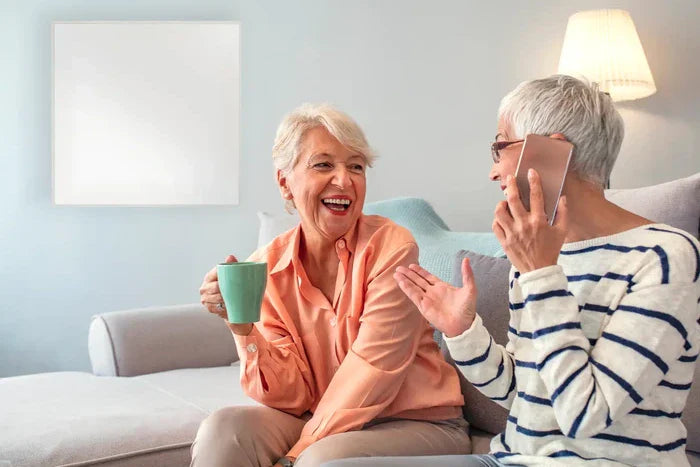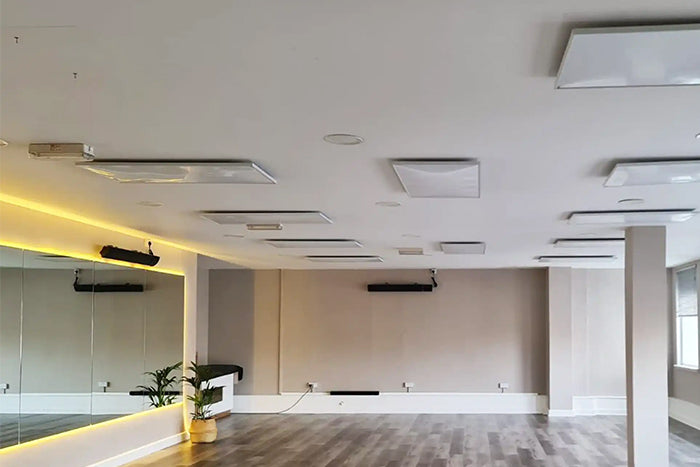If you’re of a certain age you’ll know about ‘layering-up’ before you get to the front door to go outside – especially at this time of year with a cold snap coming (we’ve checked our seaweed!). If you’re lucky enough to be enjoying the full flush of youth, be in your prime, tip top and full of beans, or any other euphemistic state for full of the joys of February, you might not personally appreciate that it’s got a bit nippy around the pippy. But scientific facts show that older people feel the cold more. Furthermore, when they get cold they need warming up quickly. That’s where Infra-Red heating can be a real benefit – like standing in the sun on a summer’s day IR directly and instantly warms the person, not the space around.
The Body of Evidence
As bodies age the insulating layer of subcutaneous fat below the skin becomes thinner. At surface level the body has less insulation and, just like a house or apartment with poor insulation, as the ambient temperature drops it gets colder faster. At the same time, as people get older, their metabolic rate drops so less energy is being created. Blood circulation also decreases making it harder to distribute what warmth there is. Overall it becomes increasingly difficult to keep what heat is generated by the body, inside the body. You need to keep on putting heat back in as efficiently as possible. Infra-Red heating gives a steady constant warmth.
Contributory Conditions
It’s also important to bear in mind that older people are more prone to have contributing physical conditions. Diabetes, cardiovascular disease and arteriosclerosis all reduce blood flow. Medication can also have the same effect. If you’re a caregiver, or suffer from these conditions yourself, it’s important to be aware of extraneous factors that may impact on keeping body temperature consistent.
Hypothermia Can Be A Real Risk
Most people associate hypothermia, a condition where the body temperature drops dangerously low, with freezing conditions. But older people with a slower metabolism can experience hypothermia even if ambient temperatures are in the low 20s. The key trigger point is when the body temperature drops below 35°C (95°F). Once the body drops below that conditions such as heart attacks, kidney problems and liver damage start to occur.
Dial-Up The Heat Or Buy An Infra-Red Heater?
All the while energy remained relatively cheap the simplest way to avoid the problems of cold was to simply turn up the thermostat to somewhere around 22°C (70°F). Generally, that would of course trigger radiators throughout the home. Today that has become an expensive business, and ‘zonal heating’ has become something of a buzzword. Nothing does that better than a ‘plug-and-play’ Infra-Red panel heater that can be hung on the wall next to Granny’s favourite chair, or even mounted on wheels to follow her around the home keeping her toasty warm for pennies per hour.
Why Heat Pumps Don’t Suit Seniors
The reasons IR heaters are so effective for older people are exactly the reasons that heat pumps don’t work – they are slower to heat up and have to heat the entire space before the warmth has any significant impact at seated level. If the person in question is living in an older, poorly insulated, property, heat pumps are not an option anyway.
Ask Us About How Best To Keep Warm
We have a range of heating solutions from one-off ‘plug-and-paly’ radiators that can be wall-mounted or free-standing for tactical zonal heating, to more substantial heater bars for larger spaces.
Any questions simply mail customer.support@kiasa.co.uk



